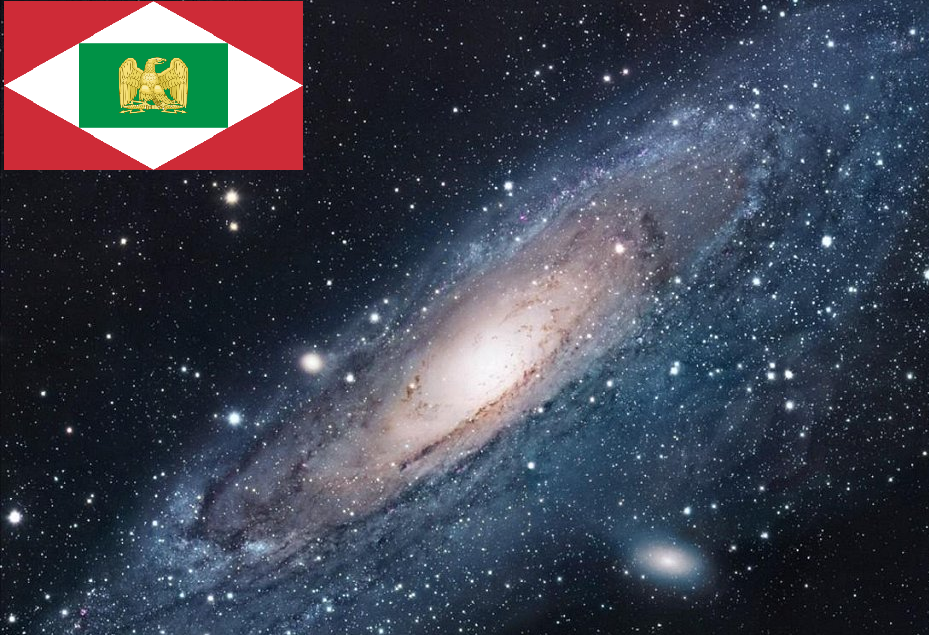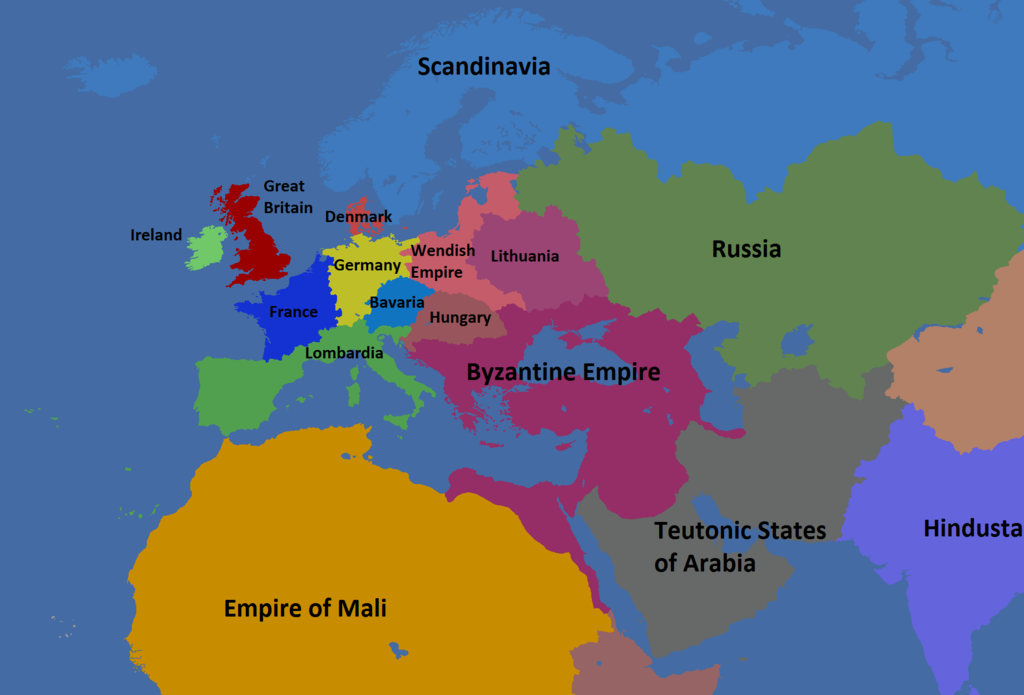Prologue - The World in 2200 A.D.
Part 1 - Old Europe
The Italian Empire was on the losing side of the First World War, waged from 1890 - 1897. That conflict was triggered by the attempts of Viceroy-King Agilof VII to secede his kingdom from the Empire, prompting Emperor Liutprand XIV to threaten war to preserve the empire. Agilof refused, and Liutprand mobilized the Italian army to quickly subdue the Bavarian resistance. Bavaria's claim was supported by Germany, the Wendish Empire, and Great Britain, and France was quick to come to their aid against a long-standing historical rival. Italy found support from an aggressive imperialist Russia and Spain, which had been set up with a pro-Italian government after the end of the resolution.
The fighting was a brutal and bloody stalemate, and its end result hinged on the participation of the Byzantine Empire. Emperor Alexios XIX remained neutral through the opening years of the war, but in 1895 agreed to join the Bavarian side of the war in exchange for promised territorial concessions from Italy and Spain. The entry of the Imperial Army into the war broke the back of Italy and its allies, and resulted in a peace conference hosted in Berlin in 1897. Italy was forced to recognize the independence of Bavaria, and surrender the valuable trade port of Ragusa to the Byzantines, who had lost it to the Italians many years prior. Additionally, Italy was required to hold popular elections in each of its Viceroy-Kingdoms so that each region could decide to remain in Italy or secede. Sicily chose to remain in the empire, but both Tunisia and Pannonia (which was renamed "Hungary" after its separation) chose to secede and become independent states. Italy was saddled with heavy economic penalties, and its Mediterranean Trade was heavily taxed for reparations. Likewise, Russia suffered its own losses, as it was forced to release its grip on occupied territory on its western borders, resulting in a free Lithuania. Spain gave up the port of Alexandria, and was forced to liberate its overseas colonies in the Americas.
It was not long, though, before ill will in Italy spilled over into a violent and powerful movement. As the Italian economy spiraled downward as a result of crippling sanctions and reparations, a sweeping nationalist movement began to gain momentum. In 1938, the empire fell into chaos when Emperor Rodipert Bavarae was assassinated on the orders of his son, Odoin, who took the throne with great promises of reconquest. Odoin set up a highly authoritarian military government headed by General Aimeric Faroingi, dissolving the Imperial Parliament and instituting strict martial rule over Italy. Preaching a return to "pure" Lombard life and culture, Odoin and Aimeric invaded Spain in 1941, touching off World War II.
The conquest of Spain lead to the proclamation of a new empire -- christened "Lombardia" by Emperor Odoin, to recall its heritage. Great Britain, France, and the European German states joined together, but the Allied Powers struggled against a revitalized Lombard army, whose massive navy locked down the Mediterranean and punished its enemies with air power. In a shocking change of heart, the Byzantine Empire joined with Lombardia, marking an almost impenetrable alliance.
Byzantium and Lombardia had their way with their rivals for some time, but the presence of large and organized civilian resistance movements slowed their progress. As Russia struggled to hold the line against Byzantium, it was a fatal flaw by Emperor Odoin that brought the war to an end. Bold and prepared to claim all of the former Lombard-controlled regions for his crown, Odoin invaded Africa -- controlled by the now-massive Empire of Mali, which had come to control the majority of the continent after winning several wars against its rivals in Abyssinia.
The African Campaign proved to have a high cost for Lombardia, and long slogs through the desert turned deadly as Mali's tanks, designed to function in the punishing desert conditions of their homeland, decimated Lombardic tank divisions by the dozens. Outmatched in desert warfare, Odoin and Aimeric watched as their military strength was sapped rapidly. Eager to put an end to their losses, they increased their offensives in Europe and moved to broker a peace agreement. In that agreement, the Lombards agreed to end their hostilities in exchange for control over Spain and the "French Corridor" -- a string of territories linking Iberia to Italy.
Through the 2000's, local movements led to the independence of Denmark from Germany and Ireland from Great Britain -- the former happening through extensive rioting and the latter through political pressure through the United Nations. By 2200 A.D., the western portion of Europe was generally peaceful and stable, with the majority of its crises resulting in diplomatic and economic pressure. Eastern Europe remained a tense region, as border friction between Russia, Scandinavia, and the Chinese Republic remained tense. The Middle East remained largely united under the Teutonic States of Arabia, a government almost entirely secularized after centuries of religious rule. The Teutonic Order relinquished its Knighthood and became a scholarly religious order, fostering a major scientific renaissance in the region, which became the center of several major scientific advances in bio-engineering.



